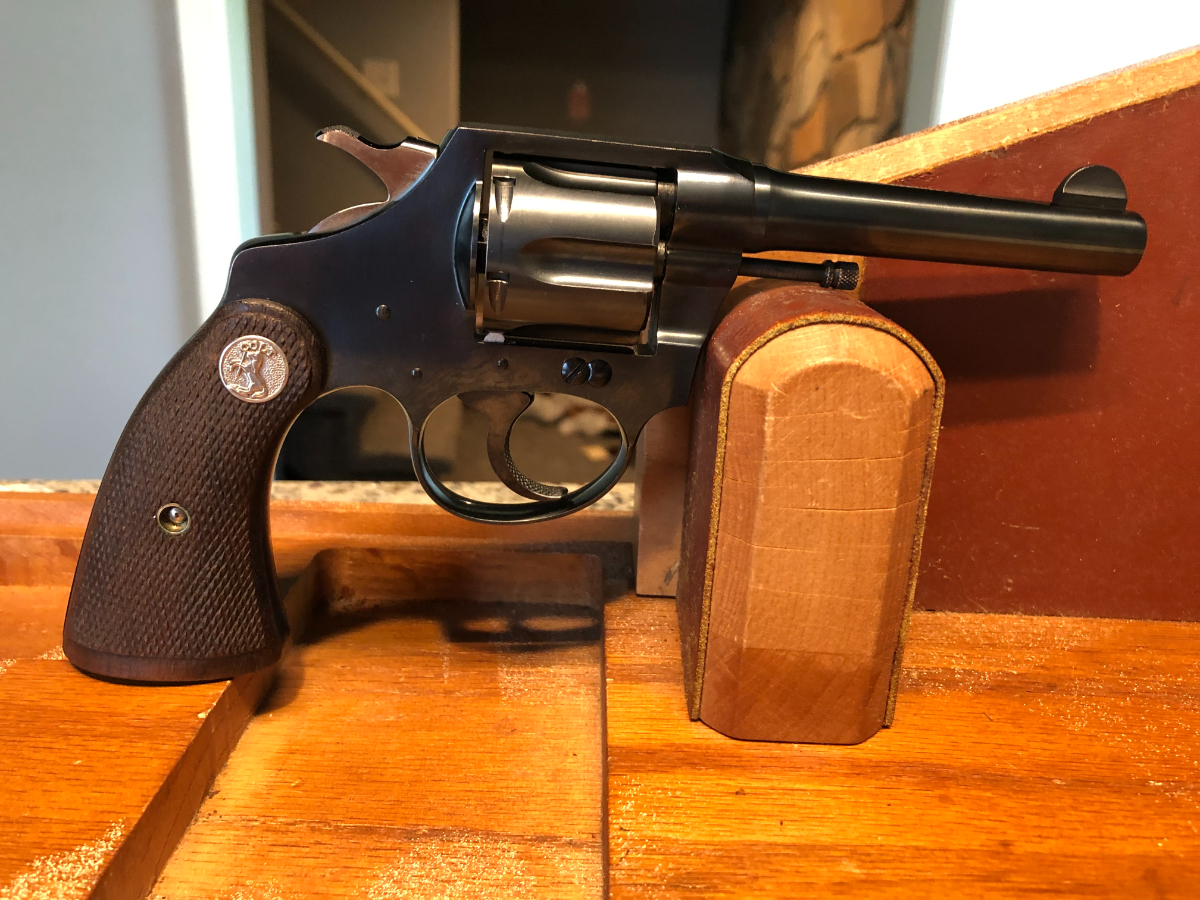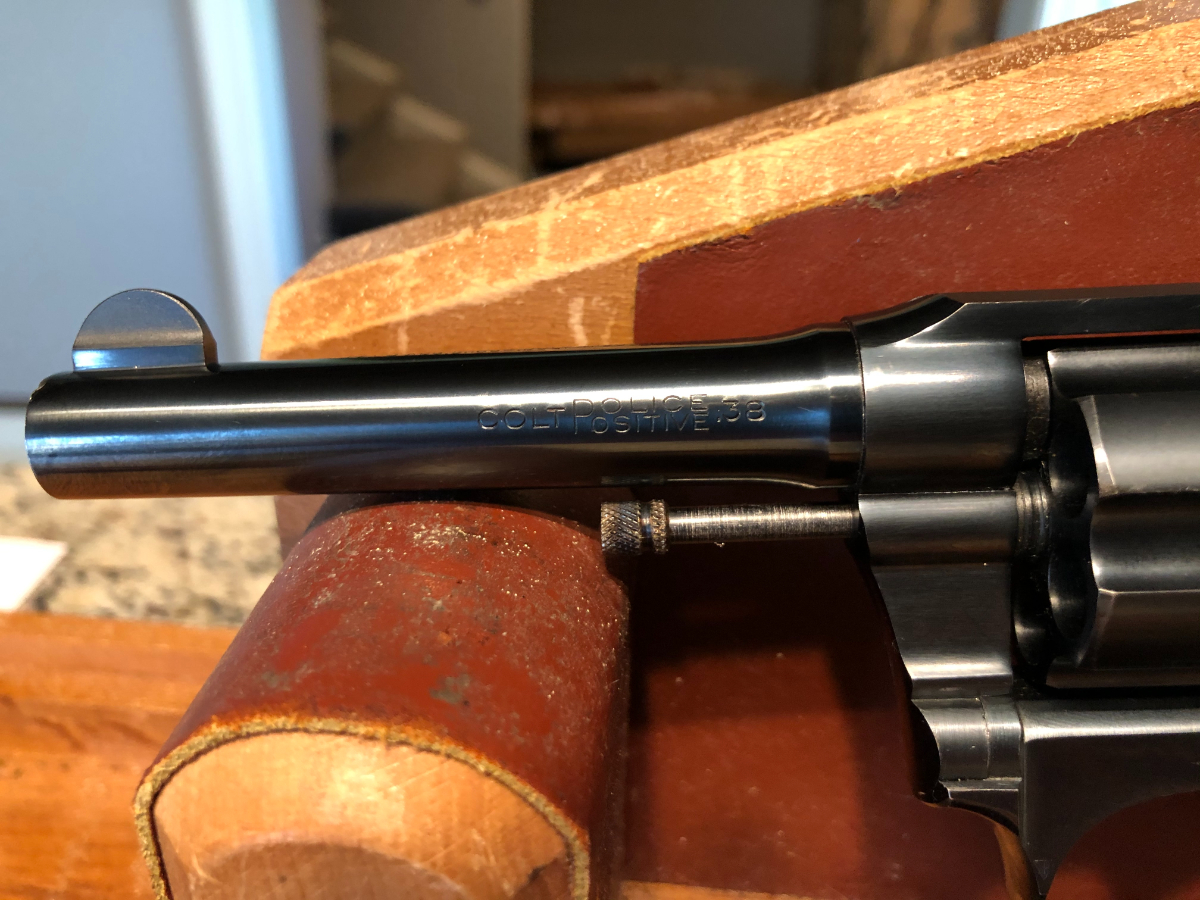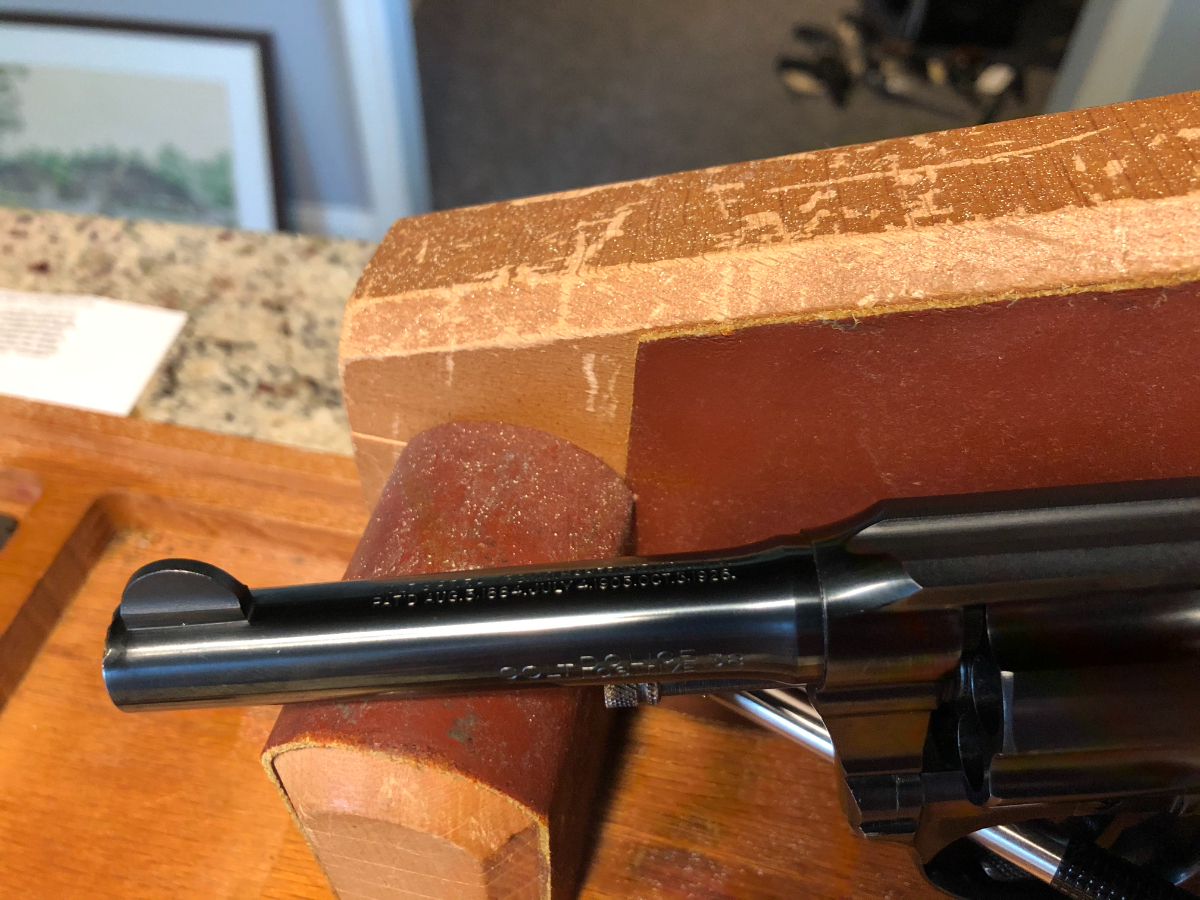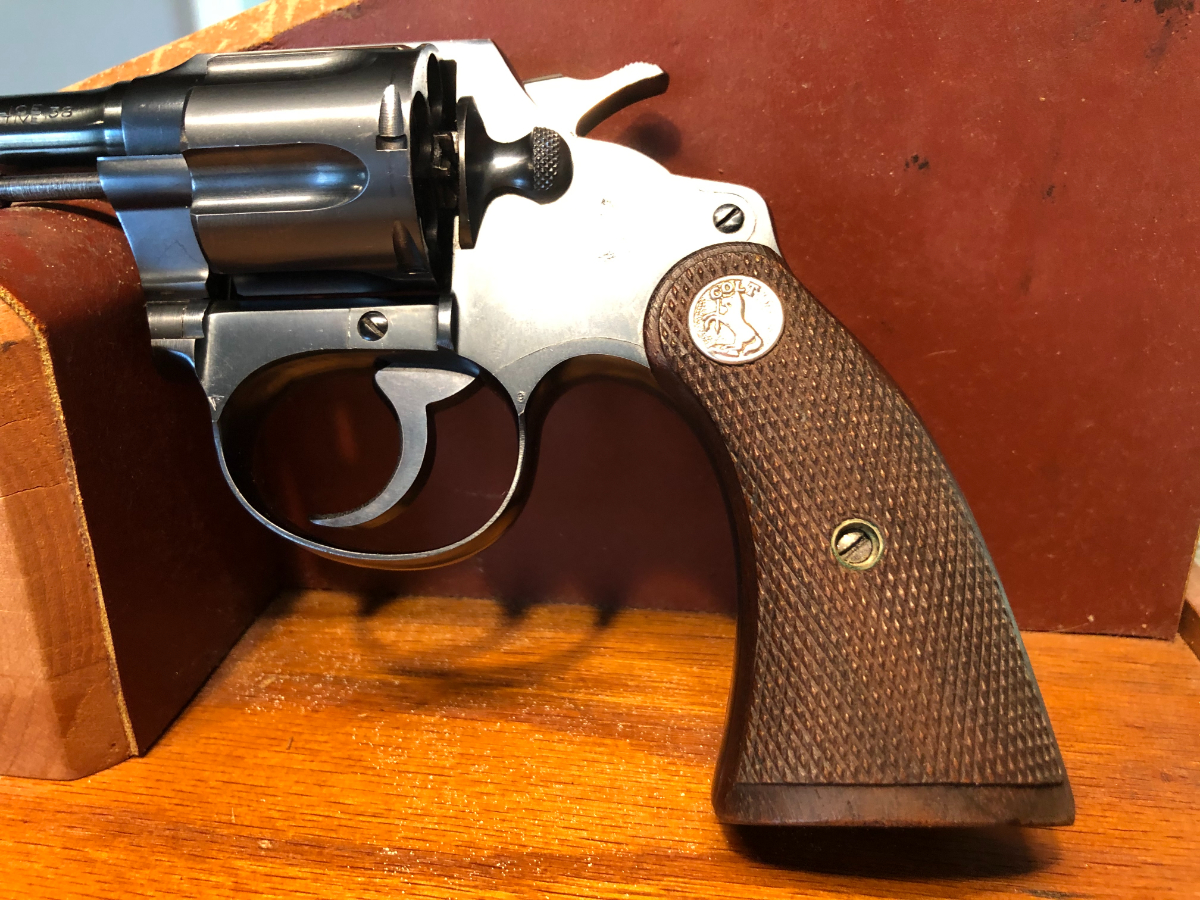Month: August 2021

A Ruger Security Six


They may be ugly to some. But they are tougher than Hell and will get the job done EVERYTIME!








SEATTLE (AP) — The COVID-19 pandemic, coupled with record sales of firearms, has fueled a shortage of ammunition in the United States that’s impacting law enforcement agencies, people seeking personal protection, recreational shooters and hunters — and could deny new gun owners the practice they need to handle their weapons safely.
Manufacturers say they’re producing as much ammunition as they can, but many gun store shelves are empty and prices keep rising. Ammunition imports are way up, but at least one U.S. manufacturer is exporting ammo. All while the pandemic, social unrest and a rise in violent crime have prompted millions to buy guns for protection or to take up shooting for sport.
“We have had a number of firearms instructors cancel their registration to our courses because their agency was short on ammo or they were unable to find ammo to purchase,” said Jason Wuestenberg, executive director of the National Law Enforcement Firearms Instructors Association.
As the pandemic raced across the country in early 2020, the resulting lockdown orders and cutbacks on police response sowed safety fears, creating an “overwhelming demand” for both guns and ammo, Oliva said. Factories continued to produce ammunition, but sales far exceeded the amount that could be shipped, he said.
“Where there is an increased sense of instability, fear and insecurity, more people will purchase guns,” said Ari Freilich of the Gifford Law Center to Prevent Gun Violence.
As supplies dwindled, Feilich said, some gun owners began stockpiling ammo.
“Early on in the pandemic, we saw people hoarding toilet paper, disinfectant, and now it’s ammo,” he said.
Wustenberg emphasized the danger in first-time gun buyers not being able to practice using their new weapons.
Going to the gun range entails more than trying to hit a target, he said. It’s where shooters learn fundamental skills like always pointing their guns in a safe direction and keeping their fingers off the trigger until they’re ready to fire.
“It’s that old adage: Just because you buy a guitar doesn’t mean you’re a guitar player,” Wustenberg said. “Some have the misconception of ‘I shot this target 5 yards away and did just fine so I’m OK if someone breaks into my house.’ You’ve got to go out and practice with it.”
The U.S. military is not affected by the shortage because the Army produces ammunition for all branches of the military at six sites across the country, according to Justine Barati, spokesperson for the U.S. Army Joint Munitions Command.
The U.S. shooting team, which won four medals at the Tokyo Olympics, also had the ammo needed to train thanks to a commitment from sponsors, but membership and junior programs have struggled, said Matt Suggs, chief executive officer for USA Shooting.
The U.S. Biathlon team, training for the 2022 Winter Olympics in February, also has been supplied with ammo from its sponsor, Lapua, made in Finland. But local clubs face shortages, said Max Cobb, president of U.S. Biathlon Association.
Jason Vanderbrink, a vice president at Vista Outdoor, which owns the Federal, CCI, Speer and Remington ammunition brands, said the companies are shipping ammo as fast as they can make it.
“I’m tired of reading the misinformation on the internet right now about us not trying to service the demand that we’re experiencing,” he said in a YouTube video produced for customers aimed at quashing speculation suggesting otherwise.
Imports of ammunition from Russia, South Korea, the European Union and others were up 225% over the past two years, according to an analysis by Panjiva Inc., which independently tracks global trade. But at least some U.S.-made ammo is heading out of the country.
Winchester has logged 107 shipments since January 2020, according to Panjiva. Most went to Australia to fulfill a contract Winchester secured with NIOA, the country’s largest small-arms supplier. Nigel Everingham, NIOA’s chief operating officer, said he could not disclose how much ammo Winchester is supplying.
A few shipments also went to Belgium and Israel.
Meanwhile, most of the ammunition pictured on the website for Champion’s Choice, a gun store in LaVergne, Tennessee, is listed as “out of stock.”
“We keep ammo on order but we’re not sure when it’s going to come available, “sales manager Kyle Hudgens said. “It does put us in a bad position with our customers. They’re asking what the deal is.”
And Bryan Lookabaugh at Renton Fish & Game’s skeet and trap range in Renton, Washington — where shooters try to hit discs flying at 35 to 70 mph — said the limited availability means fewer people show up for shooting practice and some couldn’t participate in a recent competition.
“We have not had a full shipment in a year,” he said.
Duane Hendrix, the range master at the Seattle Police Athletic Association, a police and civilian gun range in Tukwila, Washington, said he now limits ammo sales to two boxes per customer.
“I’ve never seen anything like it before,” Hendrix said. “There’s stuff we can’t get, especially rifle ammo. If you don’t have ammo for your customers, there’s no point in having your doors open.”

Decades before Sig Sauer made it seem darn near common, the Russian-designed Tokarev handgun had modularity standardized. The Tokarev was the Soviet replacement for their outdated – and somewhat strange – Nagant Revolvers from the age of the Russian Tsars. While the Soviets strived to cut their own path with maximum simplicity, they also recognized and borrowed heavily from the brilliance of one man: John Moses Browning.
Developed by Fedor Vasilievich Tokarev in the early 1930s, the gun was eventually adopted as the TT-33, which saw service throughout World War II and still serves in some places today, though it was officially replaced in 1952 by the smaller Makarov. Various versions of the gun popped up throughout areas of Soviet influence, such as the Yugoslavian M57 variant we have here.

Still, the gun was more than just a copy of Browning’s designs, it also used an innovative and zippy ammo, 7.62x25mm. The flat-shooting, bottlenecked round balanced power and speed with the need for something compact enough for a pistol. Yet it still performed well in a submachine gun and simplified the logistics to support both platforms.
BROWNING’S INNOVATION

Browning’s innovations can be found throughout the Tokarev. You’ll notice the familiar front bushing and the locking lugs on the barrel, which replicate the short-recoil tilting-barrel system from the 1911. Overall, the Tokarev has the external look of a Browning gun.
At first glance, one could even be forgiven for confusing this Soviet pistol with the blowback Model 1903. But the Russian design made some distinctly “Soviet” decisions when developing the gun for manufacturing. Indeed, the Tokarev emerged around the same time as one of Browning’s final designs, the Hi-Power. Yet it omits some of the designer’s latest developments and incorporates significant simplifications instead.

Notice the similar barrel locking lugs on both of the Browning-inspired barrels above. The Hi-Power barrel, bottom, was developed at around the same time but features more machining. The Tokarev, top, has similar locking lugs, but the manufacturing process was simplified to allow the barrel to be easily turned on a lathe. The Tokarev also maintains the barrel link from the older 1911, removing even more machining requirements.
These all-steel guns were also quite slender and relatively light. This particular Tokarev variant is an M57 from Yugoslavia. The slide measures in at 0.82 inches wide, compared to the modern 1-inch Glock 17 slide.
The gun weighs 1.8 pounds unloaded, compared to the 2.2-pound Hi-Power or the 2.4-pound 1911. Though, the 9mm Hi-Power – introduced in the 1930s as well – boasted a capacity of 13+1. The TT-33 hosted only an 8+1 capacity, while the M57 bumped that to 9+1. The Tokarev also featured a magazine disconnect.
7.62X25MM AMMO
It’s easy to see the similarities between the Tokarev and other Browning guns, but one glaring difference does stand out. The Tokarev was developed to use the 7.62x25mm cartridge. This round was flat shooting at 1,450+ feet per second and shares a lineage with the 7.63x25mm Mauser.
The round definitely had some heat to it for a pistol chambering, but it’s also surprisingly light recoiling. It’s actually a pleasure to shoot with little muzzle flip. The flat trajectory also makes it effective for close-combat applications.
RUSSIAN SIMPLICITY & HACKS
The guts of the Tokarev are a particular blend of simplicity and unique Soviet innovation. While the design owes much to Browning, it also boasts features like a removable hammer assembly. This was meant to make maintenance and repairs simpler for the large Russian army. Instead of mucking about with individual parts inside the gun after a breakage, armorers could drop in a new hammer assembly with ease.
At the same time, the barrel and recoil spring were simplified for manufacture and maintenance. The barrel locking lugs are designed to be easily machined on a lathe, while the recoil spring itself was captured on a guide rod that was also articulated. Tokarevs kept the barrel link similar to the 1911, which cut down on machining as well. This made the barrels easier to produce, and the captured recoil spring made field maintenance simpler. Simplification is a theme that runs throughout the gun.


Simplification was not all “good.” Some of the features on the Tokarev may have been easier to produce, but they were also poorly suited to a service pistol. One that stands out to this author is the slide-stop retainer clip. This was a simple solution to the more complex slide-stop retention system in the 1911 and the Hi-Power. It cut down the need for additional parts and, significantly, more complex springs (which were like the mechanical microchips of the day).
The result is an awkward “paperclip” on the side of the gun. I don’t judge guns by their external looks very often, but that clip also has a nasty habit of weakening and eventually getting bumped off. This leads to the slide release freely swinging against the frame of the gun.

The deep scratch on the left side of the pistol appears to have happened at some point when the retention clip bumped out of placement. This resulted in a circular gouge. There was also an issue with soldiers bumping the magazine release on the side of the gun. This was corrected with the heel release on the later Makarov.
If you were wondering where the safety is on a Tokarev, the answer is … random. The Tokarev originally had no safety, with the exception of a half-cock safety for the hammer. It is not drop safe when carried with a round chambered. That said, armies of the time – and even today – routinely carried their guns without a chambered round. This particular Tokarev was fitted with a trigger safety for importation, though many have a 1911-style safety fitted to the side of the gun.

FINAL THOUGHTS
Tokarevs may be outdated, but they saw wide service in Soviet-influenced nations: China, Hungary, Vietnam, Romania, Yugoslavia, Pakistan, Poland, and the list goes on. They are also still in service in the Bangladeshi and North Korean armed forces today, and it is not uncommon to see the old guns with police in Pakistan and other countries from time to time.

The blend of Browning’s genius and the demands of Soviet simplicity resulted in a unique firearm that arrived just in time to take part in a world-changing conflict and the Cold War that followed. You can feel that history when you hold the Tokarev, an odd blend of East and West during a pivotal period.


